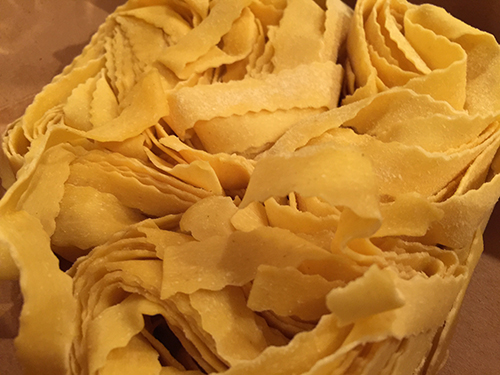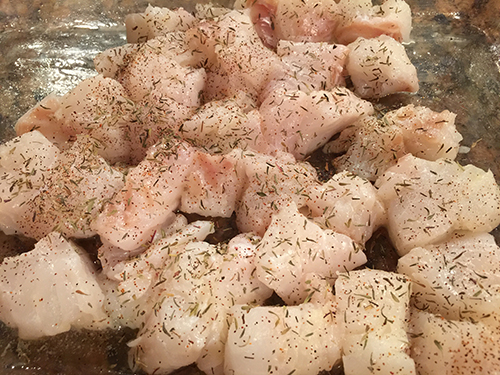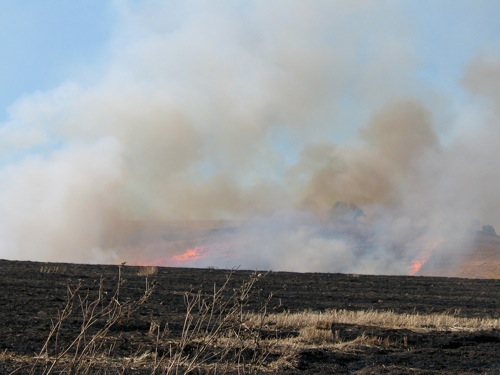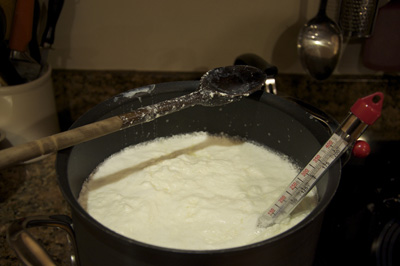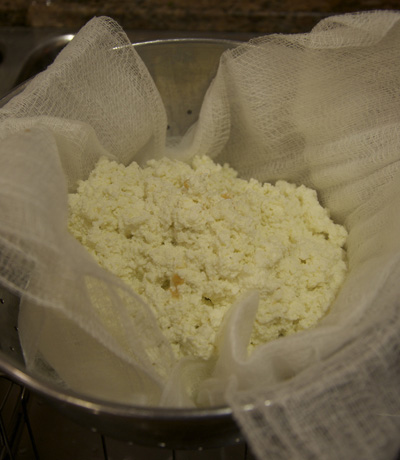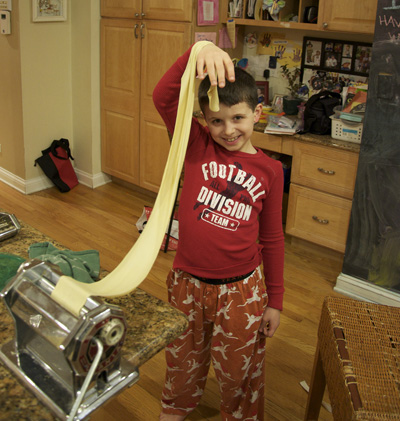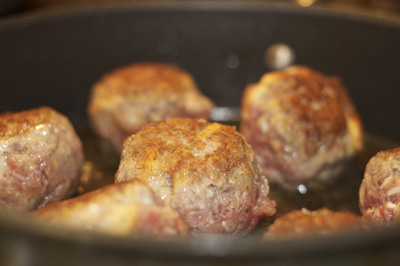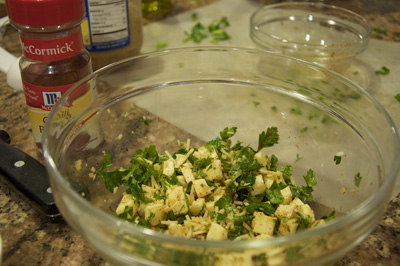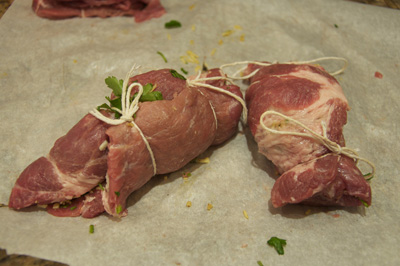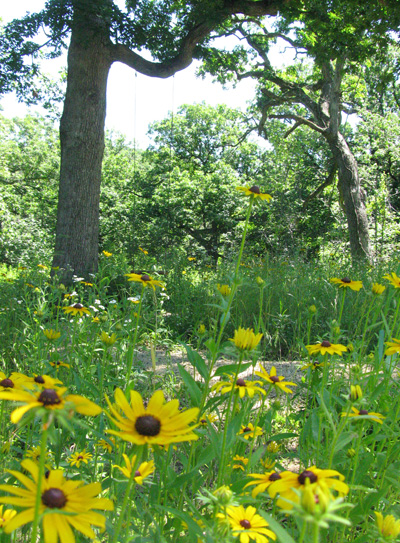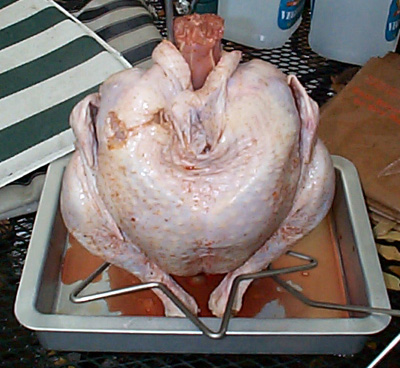Cena Lucana
May 20 was the Day of the Lucani, a completely made-up, sparsely-documented celebration for people whose ancestors can be traced to the lonely region of Basilicata, Italy. This roughly triangular province, called Lucania by ancient Greeks, is the instep of the boot of Italy, a mountainous, relatively arid landscape sandwiched between the Tyrrhenian and Ionian Seas that Norman Douglas called “the Sahara of Italy” in 1915. My great-grandparents came to America from this region in 1903 — as did very many of their compatriots. So much so that in the early part of the 20th century the volume of émigrés exceeded the birthrate.
I’ve visited Basilicata three times (and written a lot about it), meeting people along the way each time. A few weeks ago my friend Daniele Bracuto, a designer from my great-grandparents’ village of Barile, posted a menu exclusively comprised of specialities from that small town.
This is remarkable for a few reasons. First, though many (most?) Italian-Americans can trace their roots to Southern Italy, there is a dearth of cookbooks from there. (Sicily is an exception.) One might attribute this to America’s continued fascination with all things Tuscan, but the truth is that even today there is a real ignorance of Italian culture south of Rome. Christ stopped at Eboli and apparently so did the cookbook authors.
The other reason this is exceptional is that Barile is a tiny place, known really only for three things: 1) an extraordinary wine called Aglianico del Vulture; 2) its position on the slope of a majestic, extinct volcano; and 3) that its citizens lived in caves carved from limestone into the 20th century. Food, you will note, does not distinguish Barile (or, really, Basilicata — there is a reason many Southern Italian dishes use hot peppers). But I was wrong about that and I had a menu to prove it.
Daniele sent me the chefs’ recipes. They were in Italian (of course), some Arbëreshë (I think), and scaled to serve many dozens of people. There was no way I was not going to make it, terrible translation and portioning be damned.
Now, I have been practicing cooking as ancestor worship for a long time (here’s Spaghetti All’assassino, scorched wheat pasta, and Carbone Dolce). But this was a challenge above and beyond. I headed to Eataly in Chicago for expert help. For one, I was looking for tagliatelle mollicate, a kind of thick, serrated linguini I had never heard of. But Antonio, the legit paisan pasta monger at Eataly, knew of it and called it “reginelle” pasta. But Eataly did not carry it, so … he made it, by hand, with a zig-zag cutting tool!
Suffice to say there was a lot of improvisation. I chose two of the four courses from Daniele’s menu. The pasta dish and a cod and bean puree dish. Recipes are included below in Italian lest you make fun of my translation. Original proportions. Run it through Google Translate if you want a real laugh.
Tumact Me Tulez
(Tagliatelle mollicate con sugo alle noci ed alici)10 kg di reginelle
5 kg di mollica di pane
2 vasetti da 500 grammi di alici
16 kg di pelati
2 kg di noci puliteProcedimento:
Preparare il sughetto con olio aglio e separatamente tagliare le alicette a pezzettini ed immergerle nel soffritto. Aggiungere il pomodoro e portare a cottura. A parte in una padella fare tostare i gherighi di noce con la mollica di pane e un po’ di olio fino a farlo diventare croccante. A fine cottura aggiungere una spolverata di prezzemolo. Cuocere la pasta e saltare in una parte del sughetto aggiungendo un po’ di mollica aromatizzata. Impiattare aggiungendo uno o due cucchiai di sugo ed abbondante mollica di pane.
Duo di baccalà su passatina di fagioli di sarconi e peperoni cruschi di Senise
Baccalà 20 kg ammollato
7 kg di fagioli
1,5 kg di peperoni cruschi
2 kg di patate a pasta gialla
250gr di lardo
100 cialde di pane
Timo, Rosmarino, cipolla, prezzemolo, Alloro, peperoncino, aglio.Procedimento:
Baccalà: Spellare il baccalà, togliere la pelle e tagliandola a triangolini farla cuocere in forno con un filo di olio fino a farla diventare croccante per guarnizione. Tagliare il baccalà e creare 100 pezzi di 4cmx4cm circa l’uno, cucinare sottovuoto al 50% unendo timo, poco olio e pepe, cucinando a vapore a 80° (forno a temperatura controllata) se non ha il forno con buste per cottura in acqua quasi al bollore. A parte utilizzando la parte rimanente del baccalà (NB utilizzare le parti più alte del baccalà per i 100 pezzi e le parti più basse verso la coda per la pallina di baccalà), cuocere a vapore controllato sempre con timo olio e pepe e a fine cottura frullarlo insieme alle patate lesse e servire le palline con una pinza pallina gelato.Fagioli: Mettere a bagno i fagioli la sera prima, successivamente scolarli e cucinarli in acqua con poco sale e qualche foglia di alloro. A parte fare un fondo con cipolla tritata, poco peperoncino, un rametto di rosmarino e del lardo. Levare il rosmarino ed unire i fagioli cotti precedentemente. Lasciare insaporire ed aggiustare di sale e pepe. Utilizzare una parte di fagioli interi guarnizione e la restante passarla al passatutto. In fase di guarnizione utilizzare il peperone crusco.
It turned out quite well, all things considered. The sauce for the pasta had the slightest hint of anchovy and a somewhat stronger hint of red chili and the serrations of the pasta held it nicely. The cod/potato mash on top of the bean puree combined for a flavor I had never experienced.
But this is only part one. The real delicacy from the menu I am excited to make, Zuppa dei Brigante (“Brigand Soup”) awaits. For now, though, I have a flight to Italy to catch. Ciao!
Scorched wheat
In 2007, as my parents and I were exploring the area around my family’s home town in southern Italy, we drove through an ominous stretch of landscape. It was Illinois farmland meets Mauna Loa, cropland burning as neat lines of flame munched what remained of threshed wheat into soil-enriching ash.
It’s an image that stuck with me, reminding me of the controlled burns my family does to its prairie in Galena, IL and adding an eerie atmosphere to what might be my favorite photo of the volcano Vulture on whose slope our ancestral village sits.
Turns out a minor culinary trend has been sparked by what we saw. La Cucina Italiana recently featured the pasta possibilities from Grano arso (“burnt grain”), specifically from Puglia (just north of where we were in Italy). It’s basically toasted wheat, but the explanation of the tradition is fascinating. It’s said that “burnt” pasta dates to a time when land-owning nobility would allow peasants to scour the fields after a wheat harvest (and burn-down). Blackened grains would be collected for a literal poor-man’s pasta. Alternate versions of the origin of this pasta state that poor workers would sweep up the milling room floor for crumbs, toasting what they gathered, or simply take the remaining burnt flour from the decks of bread ovens.
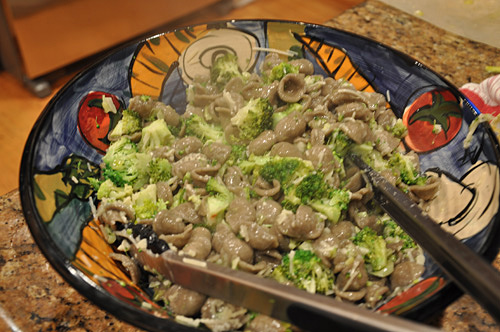
If you’re hardcore and want to scorch your own wheat for pasta-making, I applaud you. We did not do that, as at least one importer sells it.
The taste? Imagine an al dente version of a nicely toasted pizza crust. Yummy. We made an incredibly simple dish from it — essentially orecchiette, broccoli, pepperoncini, and garlic — and it was a flavor-bomb. (Here’s the recipe we used.)
So, yeah, if you’re in to off-beat Italian pastas, I’m here to recommend grano arso. Perfect winter tastiness.
Cooking as ancestor worship
My wife comes from a long line of exemplary cooks. She works the kitchen by instinct, mixing, matching, improvising. She’s economical, mindful of but not enslaved to kids’ eating schedules, and treats recipes as inspiration rather than prescription. When life gives her lemons she makes lemon meringue tart.
This is no way describes my approach to cooking.
For one, I have no sense of proportion or timing. When I get it in my head that I am going to cook I can rarely tolerate not cooking — from scratch — every last damn thing. Call it a sense of cheating. If it can be made rather than poured from a can, I want to make it. It’s such a problem that there’s even a mild irritation that I can’t actually provision the milk or beef or rare vegetables from my backyard.
Which of course means that dinner is rarely served before 10 PM on the nights I cook.
Normally this little mania takes the form of Italian cooking, specifically Southern Italian, usually from the region of Basilicata. Lots of reasons for this, mostly having to do with family heritage (copiously covered previously).
Last week, we made ravioli, with a twist. The particular recipe comes from my great-grandparents’ hometown of Barile, a village long-steeped in Albanian tradition. Ravioli alla albanese has been described as “dessert and dinner all in one” because the ricotta filling, called gyuz, is sweetened with sugar and cinnamon. Full ingredients and recipe.
The ricotta was fun and surprisingly easy. One gallon of whole milk plus one quart of buttermilk, heated to 175° until the curds start to separate. You then ladle the curds into cheesecloth and drain. Add your chosen seasoning and the fluffy warm filling is ready to go.
Hand-making ravioli, on the other hand, was an extraordinarily laborious undertaking. We’d made pasta from scratch before — with an electric machine — but that won’t do for the sheets that form the ravioli pillows.
So we borrowed a friend’s hand-crank pasta machine. Problem was, it had no clamp to secure it to the counter which, if you’ve ever tried forcing dough through a tiny metal slit, was no fun at all.
Well, that’s not entirely true. Getting it right was immensely satisfying.
Once you have the sheets you use this fabulous little slicing/pinching wheel specifically for ravioli. This gives you the pillow “casing” into which you put the ricotta. You have to make sure the edge seals firmly as you will shortly be plopping the ravioli in boiling water and don’t want filling exploding everywhere.
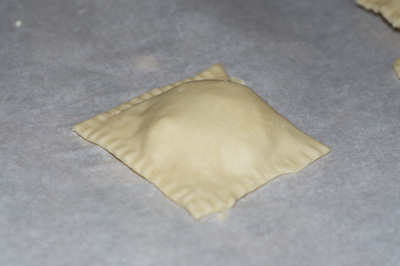
The recipe calls for meatballs and tomato sauce as accompaniment and here is where the from-scratch obsession shows its ugly underside. These sides ended up being two separate meals entirely. For one, the fist-sized meatballs came from a Neapolitan recipe that includes grated Parmesan, garlic, basil, oregano, and nutmeg (vetoed by wife).
The sauce, however, wasn’t really a sauce but a ragù, basically an entire meal in a pot.
You pound pork shoulder flat, line it with pancetta, then fill it with a yummy payload of garlic, parsley, chili powder (hallmark of this region), nutmeg (vetoed), and pecorino or parmesan. Add white wine and canned whole tomatoes and simmer forever.
In a nutshell what you get after simmering this pork bomb is a sauce for pasta and a second meal, which we didn’t not even attempt to eat on the night in question.
All in all, a fantastic experience, though perhaps not one best-suited for a weeknight. Let me know if you’d like detail on the ingredients or process.
Full photo set here.
See also Spaghetti All’assassino and Lucanian risotto.
“The Rock” Irish Red Ale
Last year, on Sept. 29, my wife’s grandfather William Burke, the center of her family, passed away. Rocky, as he was known to family and friends, was a larger-than-life gentleman who would enter a room and, on the rare occasions when he didn’t know everyone, would make a point of befriending every last person during the course of their encounter. Rocky was a supernode in the world of social networks before we thought of them as such — and he went out of his way to make sure people’s lives were better for knowing him.

Rocky also enjoyed a good libation, several in fact. Growing up in the Irish Channel in New Orleans, Rocky came from a culture surrounded by alcohol. And, while he demonstrated an understanding of the responsibility drinking entailed, he never let that get in the way of heartily embracing the bonhomie it produced. Rocky wasn’t a stranger to anyone and he wasn’t a stranger to beer.
This is why I recently decided to turn my wine- and cider-making apparatus and technique towards the goal of creating a brew in honor of Rocky.
In hindsight it almost seems preordained. Had to make an Irish Red Ale, of course. But it was anything but orderly. Making beer, while on paper simpler than making wine, is different in important ways — most notably, the use of more separate ingredients and high heat.
I’d had the components for months but they went unused until my old Atlanta pal Patrick Childress found himself in Chicago on a work assignment. Patrick is a beer-schooled brewmaster and his tutelage was absolutely essential to the undertaking. My family and I spent a fantastic summer Saturday with Patrick as he stepped us through the finer points of beer-making with the deep knowledge and quick wit of a Food Network host.
Here’s a video of the day’s activities, wonderfully narrated by the brewmaster.
It turned out great, far better than expected and, I’ll admit, better than the wines we’ve made in the past. Helps to have a board-certified brewer in the mix.
If you’ve never had an Irish Red Ale I’d recommend O’Hara’s Irish Red or Great Lakes Conway’s Irish Red. (You get a sense of what it should be from Killian’s, but as the Sam’s Liquors beer ubergeek told me, that really isn’t what it should taste like.) Or, get yourself over to my place and we’ll crack The Rock.

The label was particularly fun to make, if not an example of exceptional illustration skills. Every year for the New Orleans St. Joseph’s Day parade Rocky would don an red and green tuxedo and march with Italians (and Irish), celebrating his neighborhood and their traditions. We have many photos of him in a variety of Leprechaunish garb — all of which capture in a small way the man’s love for fun and embrace of the moment.
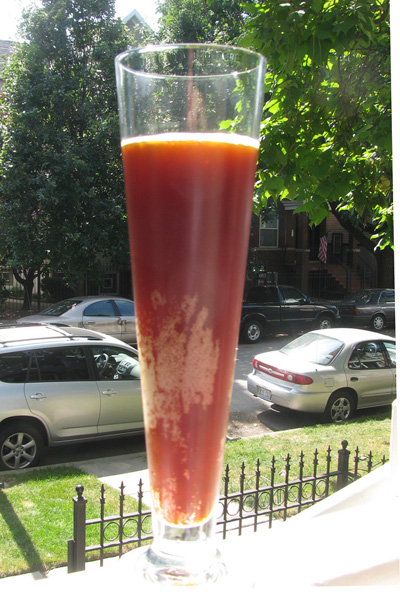
So here’s to you, Rocky. A tip of the hat, a clink of the glasses. Sláinte! Thanks for many wonderful years.
Full photoset here.
Put a fork in it
A phenomenal weekend that began with beermakin’ and a crawfish boil concluded today with the merger of several of my favorite things: an outing with my wife (my birthday gift from her) on bike through the neighborhoods of Chicago in search of unique home-grown food fare.
We were part of the new Fork and the Road culinary bike tour of Unsung Chicago Classics. Our group was 13 with two knowledgeable, friendly guides and, though the weather was chafetastically hot, it was a splendid time.
First stop after departing the Loop was Maxwell Street Market and a “brunch” of huaraches, pineapple (!) tamales, and tacos al pastor, including a wonderful taco of beef tongue.
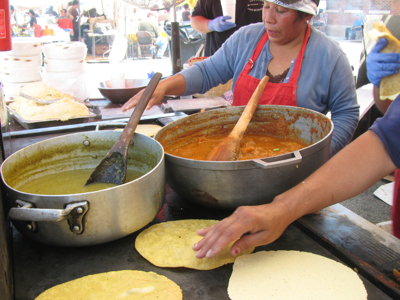
From Market Street we headed just up and over to Greektown to savor lamb and saganaki at The Parthenon where, we were told, the traditional of lighting it on fire, dousing it with lemon juice, and yelling “opaa!” originated. The Parthenon apparently is one of the few Greek restaurants that still builds their gyro cones on the vertical spit in-house. Tasty and ambient (and worth it for the air conditioning), but the best part was yet to come.

We zagged and zigged through the West Loop to Humboldt Park to our final stop at Borinquen Restaurant, originator of the Jibarito “sandwich”. The Jibarito was the best discovery of the trip: steak, lettuce, tomato, and garlic mayo smooshed between plantains. Total delight.

The group was headed back to the Loop whence we began, but thelovelywife and I were so close to home we peeled off. Not a minute after heading out we heard the chimes of an ice cream truck and, given that it was nearly 100° out, we stopped for dessert.
Nearly home, biking up Western, I heard a nasty thwack!, looked back, and found a screw had pierced my tire and exited the other side. We walked the final mile home, sweaty and full.
It’s simply a great thing, exploring the city by bike while indulging in its unique foods, but note even on a hot day and with several miles of pedaling the experience is still, as we were told, “calorie positive”. And absolutely worth it.
Full photoset here.
This is your tongue on LSD
Last night at a dinner party our host introduced us to something amazing.
After dinner but before dessert he passed around a box full of small red berries. We were instructed to take one, put it in our mouth, peel it with our teeth, and suck on it for about a minute. It was pleasing, somewhat sweet.
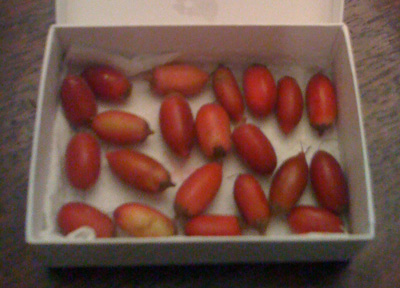
The berry is called the Miracle Fruit. What makes it special is a molecule in it, called miraculin, which binds to the tongue’s taste buds and tricks them into mistaking sour for sweet, a synesthetic bait-and-switch that your mind struggles to comprehend.
Among other things we munched whole lemons (tasted like oranges), dill pickles (like huge gherkins, only sweeter), and drank straight vinegar (like Capri Sun). The effect lasted about an hour and had us scavenging the pantry for anything we could sample with our hallucinating taste buds.
It might be the best dinner party parlor trick ever.
Turns out these berries come primarily from Ghana where they were first employed to take the edge off of palm wine (which I can attest is mouth-invertingly sour). They are mostly a novelty in Ghana still; unlike the blister nut, there’s no export market.
NPR has a story on the berry from last year.
Brambleberry, the tasting
Last summer my boys and I plucked wild raspberries from my parents’ home in Galena, Illinois. We brewed it into a wine that became part of our giftbag for our annual Christmas Party. It looked beautiful, festive. People were very pleased.
That is, until a few weeks post-bottling when all the gift bottles were in various homes and started spontaneously uncorking, spewing red hooch all over living rooms, cellars, and kitchens. Yep, we gave timebombs as our Christmas gift. (Turns out the right-before-bottling sweetening that the recipe called for restarted some latent, mutant yeasties in the bottles, damnit.)
Some bottles did not blow up, however, including my sole bottle. I advised the attendees to wait until Spring to drink it. We waited a bit longer and drank it this weekend up in Galena, mere yards from where the berries were harvested.
The verdict … mild. Not nearly alcoholic enough, which you might take as a good thing, but it really lacks body. So it certainly won’t kill you (like the Applejack), but it isn’t all that great. Apologies to those expecting excellence. But it is homemade and it was made with love, so if it didn’t explode on you, do enjoy!
Cashew update!
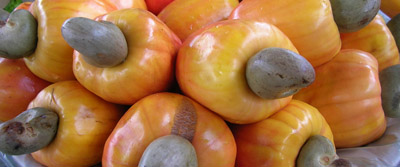
Photo by Vic Lic
FLASH! There’s an urgent addendum to my previous post about the stupendous Blister Nut.
You may recall that the cashew is unique in a variety of ways. Here are some of those ways, as a refresher. (Pay attention for god’s sake!)
- There is only one nut per cashew fruit (also known as the apple) and it is outside the fruit.
- The nut itself is surrounded by a highly caustic oil that causes a rash when touched.
- The one-nut-per-fruit and dangerous nature of the cashew is what causes its price to be higher than other nuts.
This week I was with a colleague who served in the Peace Corps years ago as a farmer planting, yes, cashew trees in Ghana. Score! Here is what I learned.
The skin of the fruit is not caustic like the nut. In fact, many people use the fruit, which is high in sugar, to ferment into booze. (Seems like I have next year’s boutique homebrew!)
But there’s more. The skin around the nut is not caustic either (which I misunderstood initially). It is the oil inside the skin, between it and the nut, which is harmful. Thus animals are attracted to the fruit — mmm, juicy — and end up eating the nut too. The skin does not digest and the nut passes intact out of the animal with the rest of the poop. And here is the evolutionary awesomeness: the poop is almost certainly at some distance from the place of ingestion, thus ensuring wider and wider propagation of the cashew seed. Not unlike the way pollen spreads through the external agency of birds and bees.
Isn’t that fascinating?
Raspberry hooch
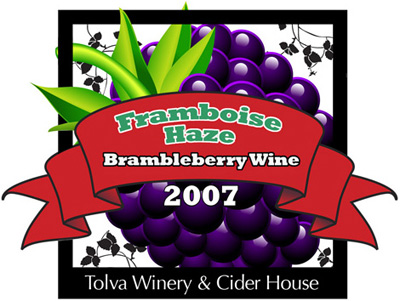
This year’s batch of homemade brew is complete and I am sure you are full of questions about it. Fear not, curious tipplers. There’s a FAQ just for you.
What’s a brambleberry?
A wild raspberry found in thorny underbrush, basically. In this case the brambleberries were black raspberries, known as Rubus occidentalis.
Why did you make wine from the berries?
Making wine from handpicked fruit has become a bit of a tradition.
What’s the alcohol content?
Very low.
Will this kill me?
Depends on what you do with it. If you ingest it, death is unlikely.
Why do I have to wait until spring to drink it?
Because it will taste better. It’s fine now, but by March it will be much more balanced.
What were the steps involved in making this?
See this photo strip for more details. Or this gallery at Flickr.
Isn’t there lead in the ground where the berries grow?
Yes, there is. Or rather, was. Most of it was mined away. And anyway lead leached into groundwater doesn’t make it through the cellulose membranes of plants.
I’d rather not attempt this unaccompanied. Do you have any recipe suggestions?
Sure. The best one is to pour a bit of the wine into a wheat beer, like you’d do to make a Kir. You can also make a nice punch with it.
Tell me an interesting fact about this wine.
The berries were picked in a single day in Galena, Illinois by John, Nathan, and Andrew Tolva on their property.
OK, tell me another one.
A photo of the “racking” process of the wine is currently the only image on Flickr to be tagged “ohmygoditisinmymouth”.
How to cook a turkey
Wow, that’s disgusting.
From Andrew, age 4:
“I make it at the fire station.* We buy it at the Speedway.** Cook it at home in the microwave. Cook it like 100 minutes.”
From Nathan, age 6:
Ingredients***: Tootsie Rolls, White Milk, Ketchup, Mustard, Salt, Pepper, Apples, Turkey
Directions: Put the white milk in a bowl, put ketchup on top. Then take the turkey and with a knife cut a hole in the turkey. Put the apples inside. Then with the mustard use it like glue and glue the turkey hole back together. Take the salt and pepper and put it on the turkey. Decorate the turkey with Tootsie Rolls.**** Then put in the oven at 90 degrees for 100,000 days. When you take it out you should put it on a frying pan. And then wait for 3 hours and then after the 3 hours you can take it off the pan and eat it!
* Kitchen safety saves lives, you know.
** He’s not altogether kidding here. We shop at a gas station. This is a source of great family shame.
*** From most to least important, presumably.
**** Details like this are what separate mere food from art.
Someone needs to actually cook some of these kid recipes and post photos. I would give thanks for that.
Happy Turkey Day, America.

